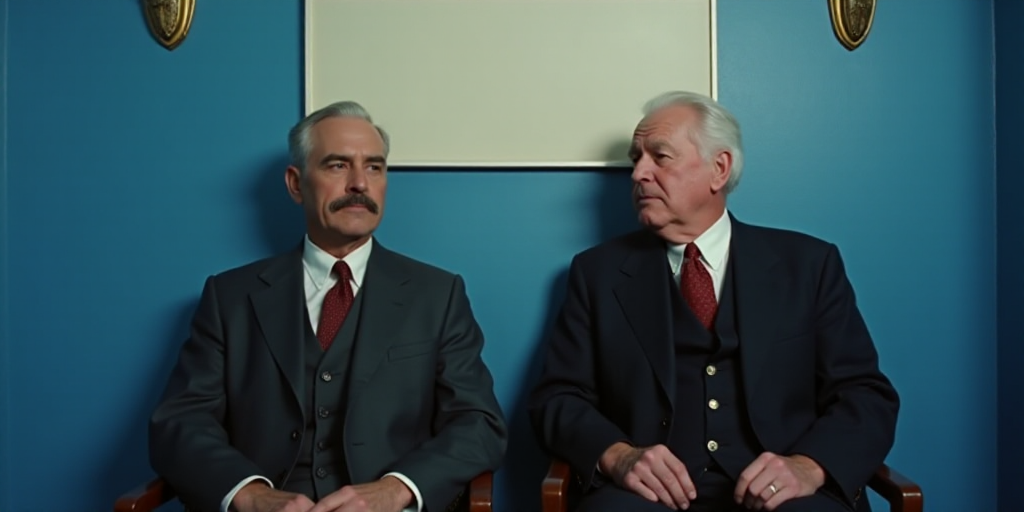Summary of Events
President Donald Trump has shifted his stance from advocating for a ceasefire in Ukraine to seeking a comprehensive peace agreement, following an inconclusive summit with Russian President Vladimir Putin in Alaska. This change seems to favor Putin, who has long desired direct negotiations for a definitive agreement. Meanwhile, Ukraine and its European allies view this as Moscow attempting to buy time for territorial expansion.
Key Figures Involved
- Donald Trump: The President of the United States, who recently changed his approach from pushing for a ceasefire to pursuing an all-encompassing peace deal.
- Vladimir Putin: The President of Russia, who has been pushing for a comprehensive agreement and views the recent summit as productive.
- Volodymyr Zelenskyy: The President of Ukraine, who had been advocating for an immediate ceasefire before the summit and is set to meet Trump in Washington.
Trump’s Shift in Strategy
Prior to the Alaska meeting, Trump and European leaders, including Zelenskyy, had been demanding an immediate cessation of hostilities. However, after the summit with Putin yielded no clear progress, Trump announced his support for a comprehensive peace agreement instead of the ceasefire he previously championed.
“A simple ceasefire agreement often does not hold,” Trump wrote on his social media platform, Truth Social. “This new path is the best way to end the terrible war between Russia and Ukraine.”
Despite this shift, the European Union’s head of foreign policy, Kaja Kallas, stated that “Russia has no intention of ending this war in the near future.”
Putin’s Perspective
Upon returning to Moscow, Putin described the summit with Trump as “timely” and “very useful.” He emphasized that the conversation was “frank, substantive,” and brought them closer to necessary decisions.
Earlier in Alaska, Putin warned Ukraine and European countries against engaging in “backroom intrigues” that could disrupt the perceived progress.
Focus Shifts to Zelenskyy’s Washington Visit
The diplomatic spotlight is now on Zelenskyy’s upcoming trip to Washington. His previous visit to the White House in February ended in a remarkable confrontation, with Trump and Vice President JD Vance publicly criticizing Zelenskyy for insufficient gratitude towards U.S. aid against the Russian invasion.
Zelenskyy expressed anticipation for the new meeting with Trump, while Trump suggested that Zelenskyy now bears responsibility for securing a peace agreement while working towards a potential trilateral summit with Putin.
Support for Putin’s Territorial Plan
The Alaska summit allowed Putin to make a dramatic return to the diplomatic scene without announcing any upcoming trilateral meetings involving Zelenskyy, a ceasefire pause, or new sanctions against Russia.
Although the meeting lasted over three hours and was deemed “very productive” by Trump, it failed to generate enthusiasm in Europe, the primary affected region but notably absent from Alaska.
Post-meeting, Trump spoke with Zelenskyy first and then connected with other European leaders, including the British Prime Minister Keir Starmer, French President Emmanuel Macron, German Chancellor Friedrich Merz, NATO Secretary-General Mark Rutte, European Commission President Ursula von der Leyen, and others.
A diplomatic source informed AFP that Trump proposed a U.S. plan to provide Kyiv with a security guarantee similar to NATO’s Article 5, which ensures mutual defense among members in case of attack.
Trump supports Russia’s proposal for taking full control of two Ukrainian regions and freezing the frontline in others where Moscow holds partial control, according to a source familiar with the matter.
“Putin demands that Ukraine abandon Donbass,” a region encompassing the eastern regions of Donetsk and Luhansk, per the source.
In exchange, Russian forces would halt their offensive in the Black Sea port regions of Yerson and Zaporiyia, where major cities remain under Ukrainian control.
European Videoconference
Macron, Starmer, and Merz organized a videoconference on Sunday with countries supporting Kyiv, known as the “willing coalition.”
In a previous statement, they welcomed the Trump-Putin-Zelenskyy summit plan but emphasized their commitment to maintaining pressure on Russia in the absence of a ceasefire.
“We will continue to strengthen sanctions and specific economic measures to curb Russia’s war economy until a just and lasting peace is achieved,” they declared.
Macron warned about Russia’s tendency to disregard its commitments, while Starmer asserted that the path to peace in Ukraine cannot be determined without Zelenskyy.
The bloodiest conflict in Europe since World War II persists despite the summit. Russia announced the capture of two eastern Ukrainian localities on Saturday, while Kyiv claimed to have repelled a recent Russian advance.






